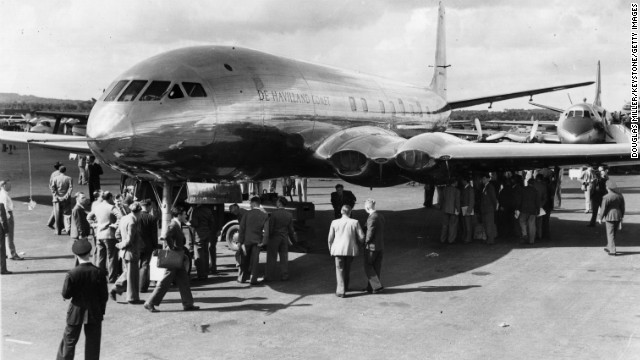
68 years ago today, Britain changed the world.
On Saturday 27th July 1949, the de Havilland Comet took off from Hatfield Aerodrome for its inaugural flight; reaching 10,000ft and circling the skies for approximately 31 mins. In turn, a new era for commercial aviation was launched, as it became the world’s first pure ‘jetliner’.
https://youtu.be/Kd9Qy4q73-M
In the three years it took from the original drawing board to the first flight, the Comet instantly doubled the speed and altitude of air transport. It also brought in a whole range of new and innovative technology such as integral wing fuel tanks, engine-bled air for pressurisation and de-icing, and airbrakes. After a production line was set up, the first pure jet powered commercial flight took place in May 1952 to Johannesburg.
With the post-war air travel continuing to grow in large numbers, the UK saw the Comet as a fresh attempt to regain its place at the forefront of the global Aerospace sector and utilise its significant its expertise in jet engine technology.
And as the American Aviation Magazine noted after its introduction, the Comet did just that: “Whether we like it or not, the British are giving the US a drubbing in jet transport”.
And since that summer day in 1949, air transport has grown far beyond even the hopes and dreams of Geoffrey de Havilland. There are now 23,500 commercial regional, single aisle and widebody aircraft operating today. That’s an average year on year growth rate of 15% since 1949. The world is now more interconnected than ever before, with approximately 3.8 billion people flying every year.
None of this would have been possible without the giant leaps in technology and innovation taken by the UK’s Aerospace industry in its development of the Comet.
Alongside this, the aircraft also taught the whole industry a lot about risk and safety in aviation. A number of fatal Comet crashes in the mid-1950s led to widespread investigation and further understanding of fuselage stress and fatigue in flight – which were then shared across the world. Boeing engineers visited Hatfield, and de Havilland engineers visited Boeing in Seattle. This helped changed the whole culture of design in commercial aviation and led to new discoveries and inspection techniques, such as structural inspection with X-Ray and Ultrasonics.
As such, the global air accident rate is now around 3 accidents per year, for every million departures.
The Comet is a reminder of innovation and ingenuity, as well as risk and sacrifice. Its introduction was the start of a revolution in air transport that we can sometimes take for granted, and its mistakes the start of a safety-first culture in aviation that we could not function without.
As John Cunningham, flight-test engineer on the Comet’s first flight, has stated since:
“I don’t think it is too much to say that the world changed from the moment the Comet’s wheels left the ground”.





